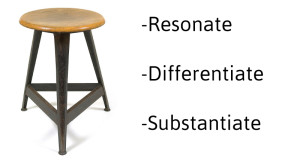Every agency has to understand the concept of a “value proposition” in today’s world. Social media is overcrowded, traditional marketing is ever changing, and the the importance of personal branding simply can’t be measured, thanks to the internet. My question for you is this: have you defined your personal value proposition? My next question is, does your agency have one that every teammate understands, and do they have the ability to recite it? Before we move on let’s define it:
The definition of Value Proposition
A value proposition is the collection of reasons why a person or company benefits from buying something (provided by www.Investopedia.com).
What Does Value Proposition Really Mean?
A value proposition for you and your insurance agency is a marketing statement that summarizes why a consumer should buy insurance, or why a prospect should use your services. The purpose of this statement should help convince a prospect that a particular insurance product or service will add more value to their life, or better solve their problem than other similar offers that are out there.
You’ll note that the Investopedia definition references a value proposition as a statement.
Instead of looking at it as a statement, look at it as more of a concept about why prospects buy something from your business – you’ll have a lot more to work with. Your value proposition is a concept; it’s the collection of reasons why people would want to buy from you and your agency that you can focus on through your marketing and sales efforts. Let’s look into this a little by separating prospects buying habits into three categories:
- Prospects must have a need for what you’re selling, it has to resonate with them.
- The prospect has to see why you stand out from the crowded space of insurance. That prospect must to see you as having the other available options (or choices). You have to differentiate yourself and your insurance agency. Being different is a GOOD thing.
- Prospects have to believe that you can deliver on your promises. Yes, it’s a big part of building trust, and nothing ever gets sold without trust! You have to substantiate.
The 3 Legged Stool of a Value Proposition
What will happen if you and your agency don’t follow all three rules of the value proposition?

- Remove resonance from your situation, and prospects just won’t buy.
- Remove differentiation and then it’s all about price and how that prospect can find someone other than you to service them.
- Remove your ability to substantiate your claims, and while clients and prospects may want what you have to sell (what you resonate) and may perceive you to be the only people on the earth that do what you do (you/your agency differentiate), they don’t believe you and won’t want to risk working with you. Trust plays a huge role within all three parts of this equation, and that’s no joke.
Now don’t get me wrong, I’m not against statements that encapsulate the mission and value of your insurance agency, but if you look at my agency website (www.paradisoinsurance.com) or my personal website (www.chrisparadiso.com), you will see my brand and mission loud and clear, thanks to the help of our professional branding experts. You can see the message right there on our website, and this message may resonate to some degree and even differentiate (ours is all about personal pictures of our staff and teammates).
Regardless, if you want to resonate, differentiate, and substantiate, you need to do much more than write a short sentence, paragraph, or page. It’s much deeper than that. While you can sum it up, the summary itself doesn’t carry much weight. It just stands to do a little positioning for you. Your actual value proposition, your collection of reasons prospects buy from you and your agency, is woven into the fabric of your agency and the relationships that you build with clients. Then, the final step is communicating it through the collection of messages you bring to the market, whether it’s traditional marketing or through the world wide web.
Instead of trying to come up with a simplified value proposition statement, focus on understanding all of the components that make up the three stages of your value proposition stool. After that, you can really get your value across in your marketing efforts, teammates conversations with customers, and you can implement it into the sales process or conversations. You can sum it all up in a short statement too, but you’ll be way ahead of your competitors that stop there and think they’re done. It’s all about your delivery, and with practice, you’ll be able to let it roll off your tongue. At the end of the day, your value proposition will earn your customer’s trust, and overall, their business.





